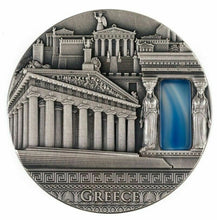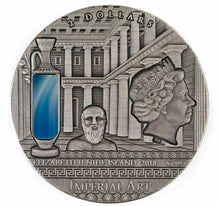Niue 2018 GREECE Imperial Art Citrine Crystal 2 Oz $2 Silver Coin
Description
Greek architects provided some of the finest and most distinctive buildings in the entire Ancient World and some of their structures, such as temples, theatres, and stadia, would become staple features of towns and cities from antiquity onwards. In addition, the Greek concern with simplicity, proportion, perspective, and harmony in their buildings would go on to greatly influence architects in the Roman world and provide the foundation for the classical architectural orders which would dominate the western world from the Renaissance to the present day.
There are five orders of classical architecture – Doric, Ionic, Corinthian, Tuscan, and Composite – all named as such in later Roman times. Greek architects created the first three and hugely influenced the latter two which were composites rather than genuine innovations. An order, properly speaking, is a combination of a certain style of column with or without a base and an entablature (what the column supports: the architrave, frieze, and cornice).
The Greeks certainly had a preference for marble, at least for their public buildings. Initially, though, wood would have been used for not only such basic architectural elements as columns but the entire buildings themselves. Early 8th century BCE temples were so constructed and had thatch roofs. From the late 7th century BCE, temples, in particular, slowly began to be converted into more durable stone edifices; some even had a mix of the two materials. The stone of choice was either limestone protected by a layer of marble dust stucco or even better, pure white marble. Also, carved stone was often polished with chamois to provide resistance to water and give a bright finish. The best marble came from Naxos, Paros, and Mt. Pentelicon near Athens.
Specifications




